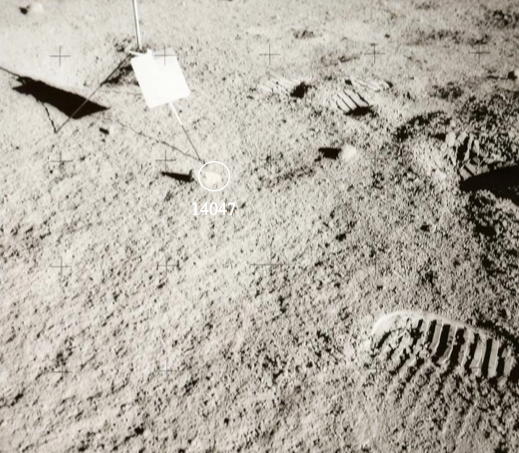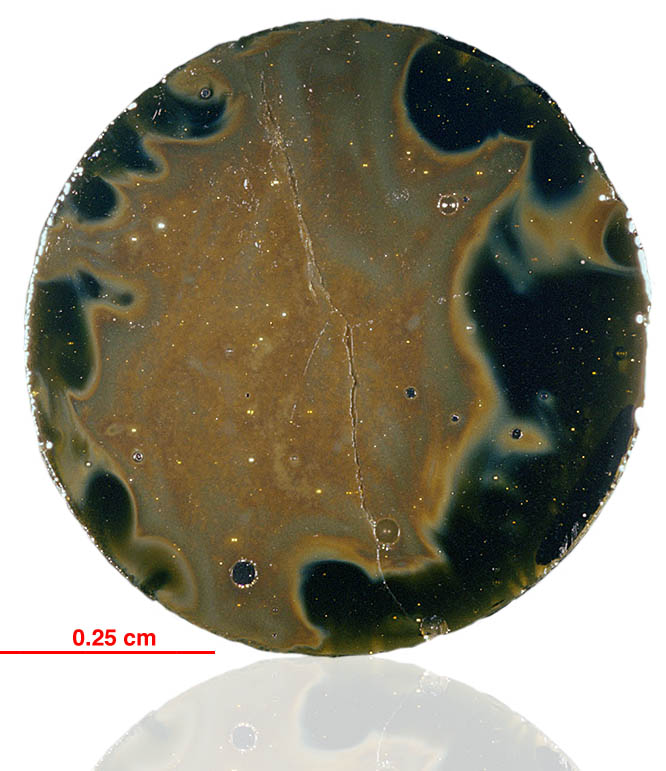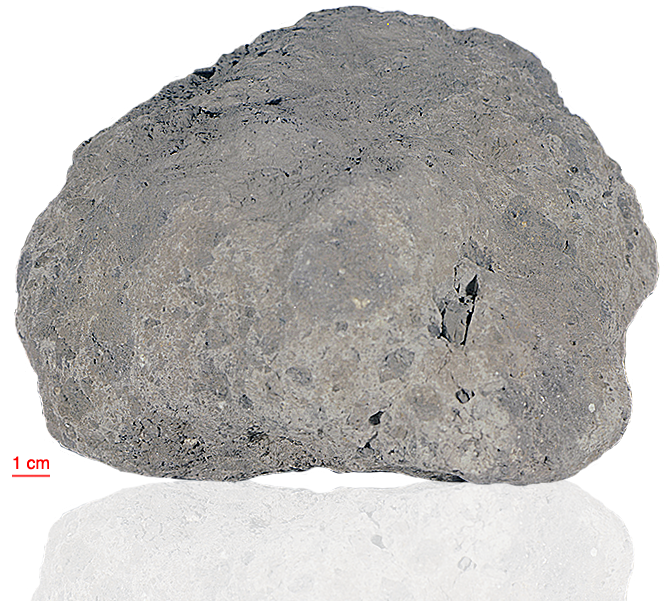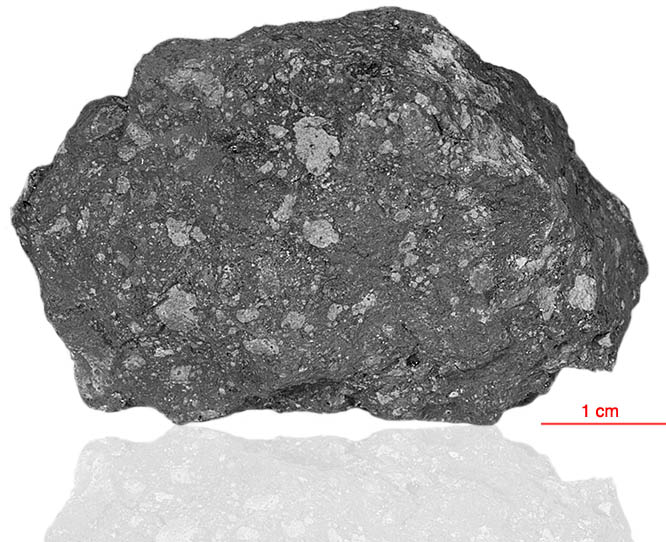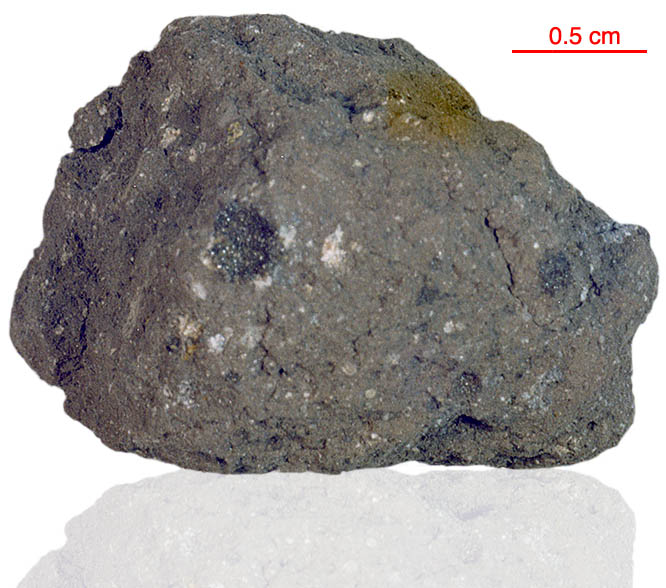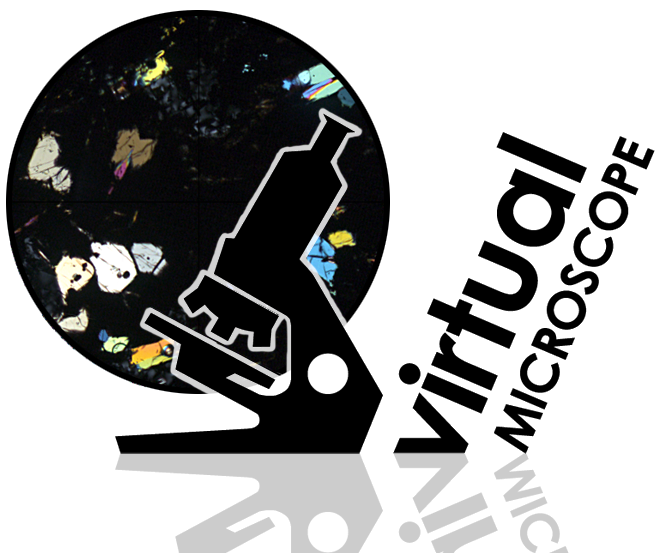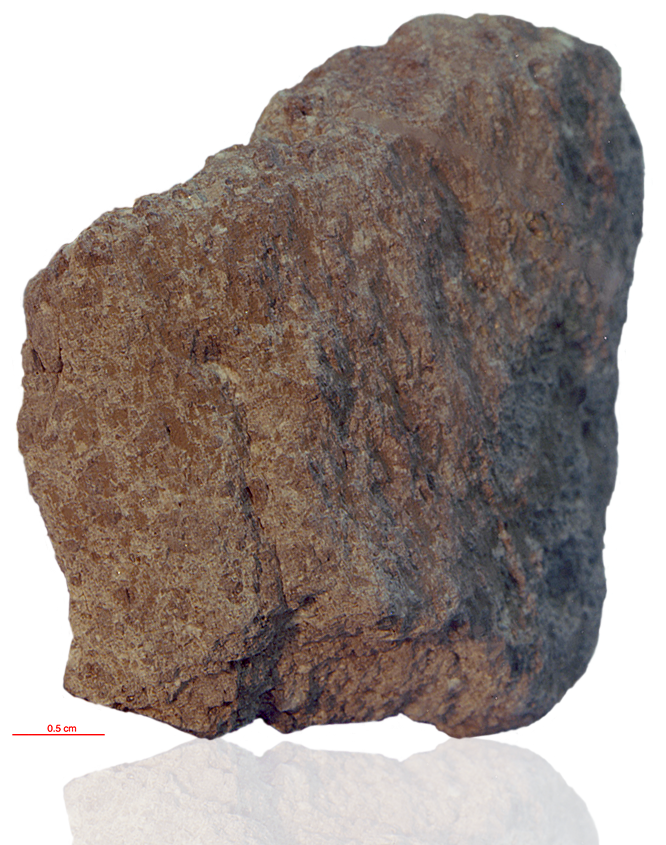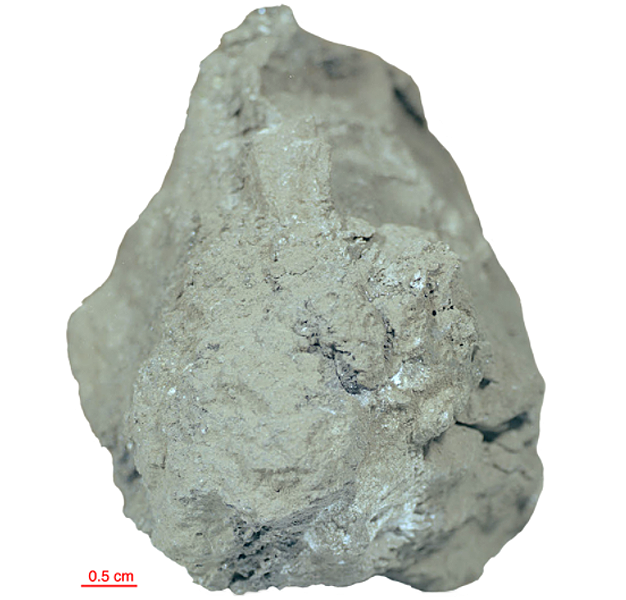
Fact sheet
14047 is a blocky, sub-angular rock with about 10% of its surface coated by vesicular glass (not visible in our thin section).The rock is a friable fine-grained clastic rock have a small percentage of sub-angular light clasts in a medium-grey matrix - its a regolith breccia. Abundant brown glass is obvious in thin section - most is agglutinate glass. Lithic fragments (mainly plagioclase-rich granulite) are also common, making up 16% of the sample. Rotations 1 and 2 show some of these fragments.
The sample weighed 242 grams before analysis. It has not been dated.
The mounting resin of this thin section has deteriorated over time and now contains clusters of feathery crystallites within and around the margins of the thin section.
Further details of this and other Apollo samples are here: http://curator.jsc.nasa.gov/lunar/
The Apollo 14 landing site was in a region formed by impact-basin debris.
Most of the 42 kilograms of rocks and soil collected on Apollo 14 are breccias (rocks that are composed of fragments of other, older rocks). In some cases, the rock fragments that form a breccia are themselves breccias. Such rocks obviously have experienced complex histories with multiple generations of impact events. Some breccias were heated enough that some of the material in the rock was melted.
Apollo 14 was launched on 31 January 1971.
